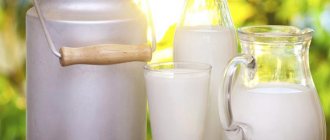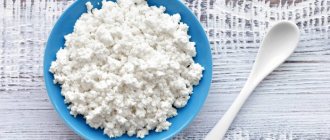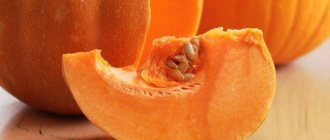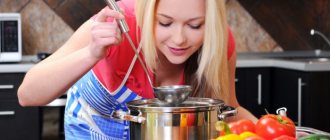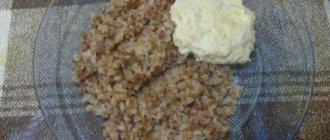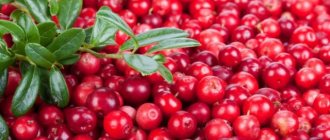General rules
Erosive gastritis is an acute/chronic inflammation of the stomach, which is characterized by the formation of single/multiple erosions (ulcerations) of various sizes on the surface of the mucous membrane that do not penetrate into the deep layers of the stomach wall and heal without scar formation. It is the depth of the erosive defect that is the main distinguishing feature from gastric ulcer , in which the defect extends to the deeper layers of the stomach.
The clinical picture of the disease is polymorphic, but the main symptoms are “hungry” pain in the epigastrium, dyspepsia (dry/bitterness in the mouth, bloating, belching , discomfort/heaviness in the stomach), nausea, vomiting, constipation / diarrhea , blood in the vomit masses and stool.
Treatment of the disease is complex and is aimed at stopping the inflammatory process, reducing excess secretion and reducing the aggressiveness of gastric juice, normalizing the motor function of the stomach, and stimulating the regeneration of mucosal defects. Diet for erosive gastritis of the stomach is an essential component of therapy, however, if the etiological factor of the disease is the bacterium Helicobacter pylori, which is often the case if the antrum of the stomach is involved in the process, eradication therapy with antibiotics .
When diagnosed with erosive gastritis, diet and treatment are largely determined by the level of acidity of gastric juice. Since in the vast majority of cases, erosive gastritis occurs against the background of increased/normal acidity with increased secretory function, Table No. 1 according to Pevzner and its varieties are taken as the basis for therapeutic nutrition. Therapeutic nutrition is aimed at protecting the gastric mucosa from the effects of negative factors, reducing the activity of acid formation and excitability of the stomach, eliminating dyspeptic disorders/pain, and normalizing the motor function of the stomach.
In case of acute erosive gastritis or during an exacerbation of the chronic form, it is recommended to prescribe fasting on the first day, allowing the intake of only free liquid, if this does not increase pain, nausea and vomiting. On the second day, you are allowed to consume rice mucous soup, jelly, meat soufflé, and rosehip decoction.
On the third day, white crackers, vegetable puree, steamed cutlets/meatballs, and weak chicken broth are introduced into the diet. After relief of acute manifestations, the patient is assigned to the main Table No. 1 . In cases of acute, unrelieved symptoms, Table No. 1A , which provides for a maximum limitation of various types of effects on the gastric mucosa for a period of 7-10 days, after which the patient is transferred to treatment Table No. 1B , which is characterized by less pronounced restrictions for a period of 10-14 days and then on to Diet No. 1 .
Unlike Diets No. 1A and No. 1B, therapeutic Table No. 1 is physiologically balanced and complete in all food nutrients (90-95 proteins, 100 g of fat and 350-400 g of carbohydrates). The energy value of the diet is at the level of 2900-3000 kcal/day, which allows it to be prescribed for a long period (3-6 months). The basic principles of nutrition on the treatment table No. 1 are:
- Exclusion of products/dishes that stimulate secretion (concentrated meat/fish broths, mushrooms, smoked meats, coffee, carbonated drinks, alcohol), as well as all products that irritate the gastric mucosa (rough/fried foods, cranberries, salty, spicy, pickled dishes, onions, seasonings, radishes, citrus juices, garlic, ginger, radish, sour fruit juices) and products that promote gas formation processes (legumes, cabbage, kvass).
- Reducing animal fats in the diet (fatty pork, goose, duck, meat products). Butter is added only to prepared dishes.
- Reducing the volume of food per meal (no more than 250 g).
- Fractional meals (up to 6 times/day), ensuring better digestion of food and its absorption.
- Consume foods/dishes only when they are warm.
- Cooking methods - boiling, stewing/baking.
Gradually, the diet expands to the diet familiar to every person, but spicy foods, spices, herbs, smoked foods, pickles, canned food, fatty meat/fish products, and animal fats are still excluded. It is important to prevent the occurrence of complications of chronic erosive gastritis by switching from the usual diet to a dietary one when provoking factors appear (stress, exams, business trips).
Diet for chronic erosive gastritis
During exacerbation of chronic gastritis, the sequence of introduction of treatment tables is similar to that recommended for the treatment of acute forms of the disease. The patient is first prescribed a strict diet. Then he is transferred to food on the Pevzner table No. 0, 1a, 1b and 1.
With atrophic chronic gastritis, gastric erosions are often formed due to reduced secretion. In this case, the patient is recommended to diet No. 2 according to Pevzner. In addition to the products allowed on table No. 1, you can also drink coffee with milk, bran decoction, and acidify dishes with lemon juice.
Authorized Products
Nutrition for erosive gastritis with high acidity includes inclusion in the diet:
- Weak vegetable broths and first courses based on it, to which carefully pureed cereals (white rice, semolina, oatmeal, buckwheat), vermicelli/thin noodles, vegetables are added and seasoned with butter or an egg-milk mixture. It is allowed to add dill and pureed meat in small quantities.
- Lean meats (chicken, beef, turkey, lamb) in the form of boiled/steamed cutlets and baked dishes. The meat must be pre-boiled and then subjected to further cooking.
- Low-fat river/sea fish, with the skin removed and steamed/baked in pieces or chopped in the form of cutlets, meatballs, zraz.
- Porridges boiled in water to a semi-viscous state (white rice, buckwheat, oatmeal), vermicelli/thin noodles in the form of baked krupenik with cottage cheese and puddings.
- Various boiled vegetables (new peas, potatoes, beets, cauliflower, carrots), prepared in pureed form (puree) with the addition of butter.
- Dried/day-old white bread, cookies and biscuits.
- Non-acidic fermented milk and dairy products (fresh cottage cheese, yogurt, kefir), sour cream only in ready-made dishes. It is allowed to eat dishes made from cottage cheese (puddings, cheesecakes, dumplings), occasionally mild cheese in grated form, and eggs in the form of a steam omelet.
- Non-acidic desserts from pureed berries/fruits, baked/stewed or in the form of jelly, puree, jelly, compotes. It is allowed to eat non-sour jam, meringues, honey, marshmallows, and marshmallows.
- Rosehip decoction, fruit juices, weak tea/coffee with milk.
Table of permitted products
| Proteins, g | Fats, g | Carbohydrates, g | Calories, kcal | |
Vegetables and greens | ||||
| zucchini | 0,6 | 0,3 | 4,6 | 24 |
| cauliflower | 2,5 | 0,3 | 5,4 | 30 |
| potato | 2,0 | 0,4 | 18,1 | 80 |
| carrot | 1,3 | 0,1 | 6,9 | 32 |
| beet | 1,5 | 0,1 | 8,8 | 40 |
| pumpkin | 1,3 | 0,3 | 7,7 | 28 |
Fruits | ||||
| apricots | 0,9 | 0,1 | 10,8 | 41 |
| bananas | 1,5 | 0,2 | 21,8 | 95 |
| nectarine | 0,9 | 0,2 | 11,8 | 48 |
| peaches | 0,9 | 0,1 | 11,3 | 46 |
| apples | 0,4 | 0,4 | 9,8 | 47 |
Berries | ||||
| strawberry | 0,8 | 0,4 | 7,5 | 41 |
| raspberries | 0,8 | 0,5 | 8,3 | 46 |
Cereals and porridges | ||||
| buckwheat (kernel) | 12,6 | 3,3 | 62,1 | 313 |
| semolina | 10,3 | 1,0 | 73,3 | 328 |
| cereals | 11,9 | 7,2 | 69,3 | 366 |
| white rice | 6,7 | 0,7 | 78,9 | 344 |
Flour and pasta | ||||
| noodles | 12,0 | 3,7 | 60,1 | 322 |
Bakery products | ||||
| white bread crackers | 11,2 | 1,4 | 72,2 | 331 |
Confectionery | ||||
| jam | 0,3 | 0,2 | 63,0 | 263 |
| jelly | 2,7 | 0,0 | 17,9 | 79 |
| marshmallows | 0,8 | 0,0 | 78,5 | 304 |
| paste | 0,5 | 0,0 | 80,8 | 310 |
Raw materials and seasonings | ||||
| honey | 0,8 | 0,0 | 81,5 | 329 |
| sugar | 0,0 | 0,0 | 99,7 | 398 |
| milk sauce | 2,0 | 7,1 | 5,2 | 84 |
Dairy | ||||
| milk | 3,2 | 3,6 | 4,8 | 64 |
| kefir | 3,4 | 2,0 | 4,7 | 51 |
| cream | 2,8 | 20,0 | 3,7 | 205 |
| sour cream | 2,8 | 20,0 | 3,2 | 206 |
| curdled milk | 2,9 | 2,5 | 4,1 | 53 |
Cheeses and cottage cheese | ||||
| cottage cheese | 17,2 | 5,0 | 1,8 | 121 |
Meat products | ||||
| boiled beef | 25,8 | 16,8 | 0,0 | 254 |
| beef liver | 17,4 | 3,1 | 0,0 | 98 |
| boiled beef tongue | 23,9 | 15,0 | 0,0 | 231 |
| boiled veal | 30,7 | 0,9 | 0,0 | 131 |
| rabbit | 21,0 | 8,0 | 0,0 | 156 |
Bird | ||||
| boiled chicken | 25,2 | 7,4 | 0,0 | 170 |
| turkey | 19,2 | 0,7 | 0,0 | 84 |
Eggs | ||||
| chicken eggs | 12,7 | 10,9 | 0,7 | 157 |
Oils and fats | ||||
| butter | 0,5 | 82,5 | 0,8 | 748 |
| ghee | 0,2 | 99,0 | 0,0 | 892 |
Non-alcoholic drinks | ||||
| coffee with milk and sugar | 0,7 | 1,0 | 11,2 | 58 |
| black tea with milk and sugar | 0,7 | 0,8 | 8,2 | 43 |
Juices and compotes | ||||
| apricot juice | 0,9 | 0,1 | 9,0 | 38 |
| carrot juice | 1,1 | 0,1 | 6,4 | 28 |
| pumpkin juice | 0,0 | 0,0 | 9,0 | 38 |
| * data is per 100 g of product | ||||
Folk remedies
- To accelerate the regeneration of the gastric mucosa, you can drink a teaspoon of a mixture of sea buckthorn and olive oil, first infused for several days in a dark place, in the morning on an empty stomach;
- Intense pain is relieved with 20 drops of propolis alcohol tincture in a glass of warm water. It is drunk every 5-6 hours before meals;
- Keep 5 aloe leaves in the cold for a day, then pass through a meat grinder, squeeze out the juice and mix with 5 tablespoons of honey. Drink a teaspoon of the resulting decoction in the morning on an empty stomach;
- Mix a tablespoon of honey and one mummy pea in a glass of warm milk. You need to drink two such glasses a day - in the morning on an empty stomach and in the evening before bed. The course of treatment is 2 weeks, then a break of 5-7 days, and then again a 2-week course of therapy.
Fully or partially limited products
The diet for erosive gastritis with high acidity involves excluding from the diet:
- Raw vegetables (white cabbage, radishes, tomatoes, radishes, rutabaga, turnips, beans, onions, peas, sorrel, garlic), mushrooms and hard-skinned fruits as they contain coarse dietary fiber and irritate the gastric mucosa.
- Products containing large quantities of connective tissue (skin, veins, cartilage) are difficult to digest.
- Highly extractive meat/fish broths, borscht, cabbage soup, okroshka.
- Animal/cooking fats, mayonnaise, margarine.
- Fatty varieties of red meat, sea/river fish, duck, goose, smoked meats, canned meat/fish.
- Coarse types of pasta and cereals (millet, pearl barley, corn, barley).
- Hard-boiled/fried eggs are difficult to digest foods.
- Pickled, pickled, salted vegetables, canned vegetables.
- Mustard, horseradish, hot spices, tomato sauce, which irritate the gastric mucosa.
- Butter/puff pastry, fresh white and rye bread.
- Fermented milk products that have high acidity, as they stimulate the secretion of gastric juice.
- Ice cream, sour fruits/berries, chocolate, carbonated drinks, alcohol.
Table of prohibited products
| Proteins, g | Fats, g | Carbohydrates, g | Calories, kcal | |
Vegetables and greens | ||||
| vegetables legumes | 9,1 | 1,6 | 27,0 | 168 |
| swede | 1,2 | 0,1 | 7,7 | 37 |
| cabbage | 1,8 | 0,1 | 4,7 | 27 |
| sauerkraut | 1,8 | 0,1 | 4,4 | 19 |
| green onion | 1,3 | 0,0 | 4,6 | 19 |
| bulb onions | 1,4 | 0,0 | 10,4 | 41 |
| cucumbers | 0,8 | 0,1 | 2,8 | 15 |
| canned cucumbers | 2,8 | 0,0 | 1,3 | 16 |
| white radish | 1,4 | 0,0 | 4,1 | 21 |
| turnip | 1,5 | 0,1 | 6,2 | 30 |
| canned tomatoes | 1,1 | 0,1 | 3,5 | 20 |
| horseradish | 3,2 | 0,4 | 10,5 | 56 |
| spinach | 2,9 | 0,3 | 2,0 | 22 |
| sorrel | 1,5 | 0,3 | 2,9 | 19 |
Mushrooms | ||||
| mushrooms | 3,5 | 2,0 | 2,5 | 30 |
Cereals and porridges | ||||
| corn grits | 8,3 | 1,2 | 75,0 | 337 |
| pearl barley | 9,3 | 1,1 | 73,7 | 320 |
| millet cereal | 11,5 | 3,3 | 69,3 | 348 |
| barley grits | 10,4 | 1,3 | 66,3 | 324 |
Confectionery | ||||
| candies | 4,3 | 19,8 | 67,5 | 453 |
Ice cream | ||||
| ice cream | 3,7 | 6,9 | 22,1 | 189 |
Cakes | ||||
| cake | 4,4 | 23,4 | 45,2 | 407 |
Raw materials and seasonings | ||||
| mustard | 5,7 | 6,4 | 22,0 | 162 |
| ginger | 1,8 | 0,8 | 15,8 | 80 |
| ketchup | 1,8 | 1,0 | 22,2 | 93 |
| mayonnaise | 2,4 | 67,0 | 3,9 | 627 |
| ground black pepper | 10,4 | 3,3 | 38,7 | 251 |
| chilli | 2,0 | 0,2 | 9,5 | 40 |
Dairy | ||||
| sour cream | 2,8 | 20,0 | 3,2 | 206 |
Meat products | ||||
| pork | 16,0 | 21,6 | 0,0 | 259 |
| ham | 22,6 | 20,9 | 0,0 | 279 |
Sausages | ||||
| dry-cured sausage | 24,1 | 38,3 | 1,0 | 455 |
| sausages | 10,1 | 31,6 | 1,9 | 332 |
| sausages | 12,3 | 25,3 | 0,0 | 277 |
Bird | ||||
| smoked chicken | 27,5 | 8,2 | 0,0 | 184 |
| duck | 16,5 | 61,2 | 0,0 | 346 |
| smoked duck | 19,0 | 28,4 | 0,0 | 337 |
| goose | 16,1 | 33,3 | 0,0 | 364 |
Fish and seafood | ||||
| dried fish | 17,5 | 4,6 | 0,0 | 139 |
| smoked fish | 26,8 | 9,9 | 0,0 | 196 |
| canned fish | 17,5 | 2,0 | 0,0 | 88 |
Oils and fats | ||||
| animal fat | 0,0 | 99,7 | 0,0 | 897 |
| cooking fat | 0,0 | 99,7 | 0,0 | 897 |
Non-alcoholic drinks | ||||
| bread kvass | 0,2 | 0,0 | 5,2 | 27 |
| * data is per 100 g of product | ||||
Mouthwatering recipes
As you can see, from the listed range of products you can prepare many delicious and healthy dishes. As an example, here are a few recipes.
Ingredients:
- 1 kg minced pike;
- 1 unsweetened bun or loaf;
- 200 ml milk;
- 1 egg;
- 1 onion;
- 1 tbsp. l. olive oil;
- salt to taste.
Preparation:
- Soak the crushed bread pulp in warm milk.
- Chop the onion very finely or grind in a blender.
- Combine minced meat, onion, bread, egg, butter. Add salt to everything and mix well.
- Form cutlets, cook in a double boiler or in a water bath for 20 minutes.
You will need:
- 150 mg couscous cereal;
- 1 banana;
- 1 apple;
- 2 tbsp. l. honey;
- 2 tbsp. l. olive oil.
Action plan:
- Boil the couscous over low heat for 5-10 minutes.
- Let the porridge cool slightly, then add honey and butter to it and stir.
- Wash the fruits, peel them, cut them into small cubes.
- Sprinkle a serving of porridge with fruit.
Reviews and results
A diet for erosive gastritis, according to patients, helps relieve symptoms of the disease. The food is complete, which allows patients to be on a diet for a long period of time.
- “... Chronic erosive gastritis for 8 years. Exacerbations occur periodically, more often in autumn and spring, but sometimes after gross errors in nutrition. I immediately switch to a strict dietary diet for at least 3-4 weeks. I cook for myself, I quickly mastered cooking. Usually during this time the pain disappears, well-being improves, heaviness and heartburn in the stomach disappear. In addition, I’m also losing 3-4 kg, which is very useful given my increased body weight”;
- “...Frequent exacerbations of erosive gastritis are caused by irregular nutrition and eating errors. Exacerbations are manifested by heartburn, belching, bloating, and heaviness in the stomach. I no longer go to the hospital, because after 5 years I have already learned the treatment by heart. Diet has a good effect. Even a 2-week diet helps to eliminate discomfort and normalize the functioning of the stomach and intestines. However, it’s difficult for me to stay on a diet for a long time, since my work involves constant travel, and I don’t have enough time to cook for myself separately”;
- “... I usually follow a diet during an exacerbation. I noticed that things immediately worsened after eating radishes, radishes, onions and garlic. Mayonnaise is also bad for the stomach. I eat steamed fish, boiled meat, porridge, and steamed cutlets. I brew various herbs, usually calendula, chamomile, and rosehip. I exclude almost all raw vegetables, especially cabbage in all forms, which increases pain and causes bloating in the intestines. I try not to overeat, although due to work it’s not always possible, I’m waiting for retirement so I can go on a tight diet and generally take care of my health.”
Recipes
We all love to eat delicious food, but how can we make it so that it is also healthy? Below are 3 delicious recipes that will help relieve pain and enrich the body with nutrients.
- Head of cauliflower – 1 pc.;
- Egg – 1 pc.;
- Wheat flour – 1 tbsp;
- Milk – 1 glass (250g);
- Sour cream – 2.5 tsp;
- Sugar - to taste;
- Water – 1.5 cups (350g).
Cut the cauliflower into small florets and cook until tender (10-15 minutes). Pour flour into a heated frying pan and pour in cabbage broth. The cabbage inflorescences are crushed using a blender, boiled milk and a little sugar are added. Bring the mixture to a boil and remove from heat. The egg and sour cream are added to the soup and brought to a boil. It is necessary to eat only warm; hot food has a bad effect on the stomach.
- Low-fat cottage cheese – 1 pack (250g);
- Egg – 1 pc.;
- Flour – 100g;
- Sugar - to taste;
- Sour cream – 2 tbsp;
- Raisins - optional.
Add egg, sugar, sour cream to cottage cheese. Make the dough, dip it in flour and place it on a greased baking sheet. Bake in the oven for about 20-25 minutes at 150 degrees, turn over as needed.
- Non-acidic berries – 1 cup;
- Semolina – 1 tbsp;
- Water – 0.5 cups;
- Sugar – 1 tbsp.
The berries are washed, dried and squeezed, then poured with cold water, boiled and filtered. Then bring it to a boil again, add sugar and semolina, mix thoroughly, and cook until tender. Then remove from heat, cool, beat and pour into mold.
- Efficacy: therapeutic effect after 21 days
- Time frame: 3 months
- Cost of products: 1500-1600 rubles. in Week
Principles of nutrition
- Food products are selected to ease the work of the stomach. These are easily digestible foods.
- You should eat small meals, 5-6 times a day. One of the important rules is to constantly feel full to avoid excessive production of gastric juice.
- You should eat slowly and chew your food thoroughly.
- Recommended serving size 250 – 300 g.
- Food is consumed warm.
When preparing dishes, it is important to find out which products can be used to prepare them and which are prohibited, especially in the acute stage. It is recommended to bake, boil, stew.
